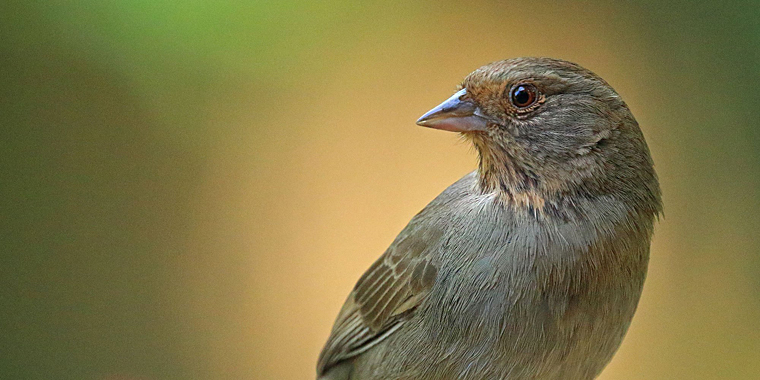
I’m currently sharing the garden with a mated pair of California Towhees, which have taken up residence in one of my many hanging flower pots. Towhees are commonly found birds in coastal California; a nondescript brown color devoid of significant markings, these robin-sized birds happily share garden space with people, feed on seeds and insects and cut the air with a sharp chirp. They’ve built a nest, and will most probably brood two or three sets of chicks during the year. They like establishing a home base, and will hang around for a while, I expect.
It’s been fascinating to observe their behavior, which includes hopping to within one foot’s distance from me while I’m sitting in the garden, chirping insistently. I try to imagine what’s going through their minds, how they see the world and the feelings it stimulates in them.
Below the threshold of thought lies the threshold of image. It is within the threshold of image that animal life arose and through which human imagination got its start. The image instinct governs a hard-wired set of behaviors, actions encoded within genetic material itself.
The ability of birds to build a nest is one easy example. Lacking any opportunity to learn to build a nest, the Towhees inherently know exactly how to do it and how it should look; the image instinct of a nest functions as an image/idea that prompts actions. Although birds communicate through sound and movement, their communication is not a complex audible language for conveying abstract ideas. Towhees are in the here and now; thinking in words about the past or future is something only people do.
The image instinct includes not only visual information, but other genetically inherent information about sound, smell, texture, taste, flight, and raising progeny. Once the image instinct kicks in, behavior is adapted to the environment. My hanging pots simply afford safely elevated places to build nests; that they hold plants I find attractive means nothing to the entirely opportunistic Towhees. In essence, Towhees do not think, rather, they accumulate experience and information that, resonant with image instinct, allows them to survive and reproduce in varied habitat.
People, of course, also embody instinct, image and otherwise; babies nurse without taking lessons and their hands grasp. As humans develop, survival instincts remain, but overall expressed behavior largely shifts from image-based to language-based. Language allows us to convey images verbally, what Marshall McLuhan called “using an ear for an eye.” In this way, we teach and learn, which lessens reliance on inherently genetic behavioral instructions.
Human brain development of large frontal lobes appears to be associated with both self-identity and abstract thought, an evolutionary event accompanied by great powers of imagination. Imagination, we note, includes the root-word “image,” which points to the origin of human thought. Our obsession with images – pictures on cave walls, words on paper, television, movies, photos, artwork and the like – reflects an inherently genetic image instinct.
When we hear words, we create mental images, and those images resonate with memories, feelings and emotions. George Lakoff illustrates this by saying, “Don’t think of an elephant.” Despite the word “don’t,” we cannot but form the image of an elephant. In this way, each of us constantly constructs a working image of ourselves and the world around us, contemplate the past and imagine the future.